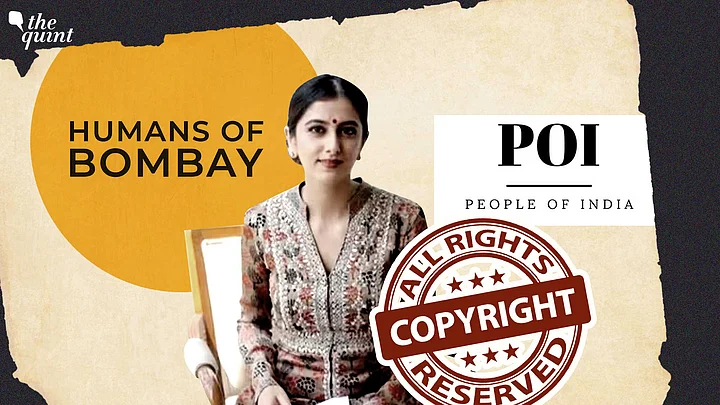Imitation is the most sincere form of flattery, but not in the least when the imitator itself cries wolf.
Days after digital storytelling platform Humans Of Bombay (HOB) had landed itself in controversy and a complex legal matter of 'Copyright of Content', when it recently moved the Delhi High Court against rival medium People Of India (POI), alleging the latter had coped its "content" and "business model", New-York based platform 'Humans of New York' called out HOB in the public court of opinion for "appropriation" of its work.
The strife expressed by Brandon Stanton (Founder, HONY) at the over-commercialisation of his appropriated work by HOB is reminiscent of the reasons that the Creative Commons licenses were published by the eponymous non-profit organisation in 2002.
What the IT Laws Say on Copyright Infringement
Matters seem to be spiralling out of control for HOB and POI case. While the emphasis, in this case, has been the maze of intellectual property laws, it is important to consider the responsibility that a platform provider has in cases of “intellectual property violation”.
Now, even as the HOB rebutted, cleverly categorising HONY as a "storytelling movement” to ward off possible suits claiming infringement, it is worth pondering over what really lies at the heart of the dispute as the case gets heard over the next few weeks at the HC.
The newly introduced Information Technology (Guidelines for Intermediaries and Digital Media Ethics Code) Rules, 2021 (subordinate to the Information Technology Act of 2000) place an obligation to conduct due diligence on intermediaries including social media intermediaries.
This includes the responsibility of informing the user to not upload/share any information that "infringes any patent, trademark, copyright or other proprietary rights.” At this point, it is unknown if HOB had approached any of the platforms (including Meta and Instagram) to remove the allegedly plagiarised content of POI.
The other issue to consider is whether substantially similar photographs of the same people and narrations of the same incidents are violative of copyright law, and the photographs, if taken by HOB, are "artistic work” and entitled to copyright protection under the intellectual property laws of India.
But the claim made by HOB that POI has copied their “business model” is unlikely to find much favour in the courts. A concept of the US patent laws, the idea behind granting business model patents (distinct from business strategy which is not patentable) is to help companies/inventors protect the intellectual property rights vested in their unique ideas. India has not yet recognised business methods as patentable, and broad ideas or themes are not amenable to copyright protection.
The Conundrum of Creative Content Ownership
HOB, ironically, is named after the city of Bombay which was the birthplace of photography in colonial India. From the “ethnographic portraits” taken by the British in the nineteenth century, where the Indian subjects were photographed as a homogenous unit; to the democratisation of photography where platforms like HOB and POI claim to tell individual stories; the evolution of the art of storytelling through photography has been impressive.
Unlike at its inception, the medium has been democratised through the ubiquitous nature of camera phones and ring lights! Given what is at stake, undoubtedly, this case will be a pathbreaking precedent as to the originality of content, and who gets to claim it as their own.
Coming back to Creative Commons licenses, these allow creators to keep their copyrights while sharing their works on more flexible terms than the default “all rights reserved.”
Though copyright protection is automatically granted on the authorship of original/artistic works, some creators do not necessarily want the entire gamut of protections and restrictions afforded by copyright.
A creator can use the Attribution "Non-Commercial license” to allow others to use their work, or adaptations of their work, for non-commercial purposes only, and only as long as they give credit to the original creator.
More Questions Than Answers
What then explains the criticism encountered by HOB in the court of public opinion? Is it the crude monetisation of a beloved format? The fact that HOB has a privileged gaze? Is it the lack of wit that HONY is so famous for? Or, is it the misogyny of the internet?
As consumers of content (that word again), we have a front row seat to this dispute. We can only hope that the judgment will not only bring clarity, but also help protect work of the lesser known storytellers and artists who have come to rely on the social media platforms for their livelihood and prestige.
In the meantime: we could listen to Billie Eilish sing “By the way, you've been uninvited 'Cause all you say are all the same things I did.”
(Sangeeta Chakravorty is a former lawyer and currently a student at the School of Advanced International Studies, Johns Hopkins University, Washington DC. This is an opinion piece and the views expressed are the author’s own. The Quint neither endorses nor is responsible for them.)
